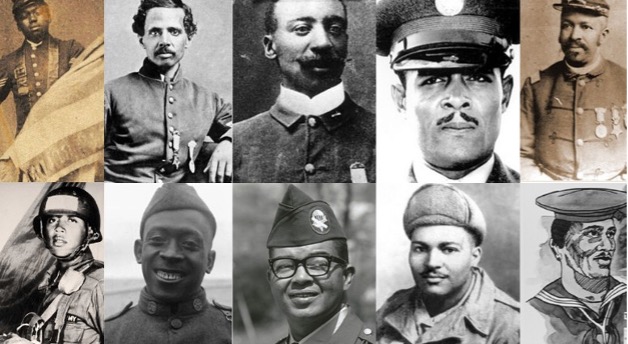
 By Dr. John E. Warren, Publisher
By Dr. John E. Warren, Publisher
San Diego Voice & Viewpoint Newspaper Chairman of the Board of Directors, NNPA
On November 11, 2025, Americans will come together to honor the valiant men and women who have served in our military. This tribute finds its roots back on November 11, 1918, when an Armistice was declared between the Allied forces and Germany at the end of World War I. In November 1919, President Woodrow Wilson proclaimed November 11th as Armistice Day, emphasizing the significance of the end of what was dubbed the War to End All Wars. The recognition deepened in 1938 when Congress made this a federal holiday, evolving further in 1954 when President Dwight D. Eisenhower suggested changing Armistice Day to Veterans Day, celebrating all Americans who served in the various military conflicts.
Though Veterans Day honors all veterans, it is critical to remember the unique and profound contributions of African Americans in the armed services, often in the shadow of a history marked by segregation and racism. The story of African American service in the military is layered, complex, and deserving of recognition. Let’s take a moment to appreciate a few of the extraordinary individuals and units that have shaped this narrative.
The legacy begins with Crispus Attucks, the son of a slave and the first American casualty in the Revolutionary War on March 5, 1770. Attucks stands as a powerful symbol of bravery and sacrifice. Moving through the annals of history, we find Nurse Susie King Taylor who broke barriers in the 1800s by providing education to African Americans when it was illegal to do so. Taylor not only fought for education but also helped save lives during the Civil War, working alongside Clara Barton, the founder of the Red Cross.
During the Civil War, figures like Lewis Martin of the 29th U.S. Colored Infantry exhibited incredible bravery. Martin lost both a leg and an arm at the Battle of the Crater in July 1864, showcasing the extreme sacrifices made by African American soldiers. Likewise, the Buffalo Soldiers, a term for the Colored Soldiers of the 10th Cavalry, fought valiantly in both the Civil War and the Indian Wars, gaining respect and recognition despite the discrimination they encountered. Another name essential to this narrative is Corporal Freddie Stowers, who led the all-Black 371st Infantry Regiment in a successful mission against German troops in France. He was recommended for the Medal of Honor, which was tragically awarded posthumously to his family 70 years later.
Among other key figures, we remember Corporal John T. Van Rensalier of the 350th HQ Battalion, who earned the French Legion of Honor during World War I. The legacy of Navy Mess Steward Doris “Dorie” Miller also deserves mention; he became the first African American to receive the Navy Cross based on his courageous actions at Pearl Harbor during World War II. In the context of gender dynamics, Colonel Margaret Barley is noteworthy for her advocacy for integrated military housing during World War I, at a time when racial segregation was rampant in military settings.
Colonel Charles Young, the third African American to graduate from West Point, ranks high on this list too. He made history as the first African American to achieve the rank of “Colonel” in the U.S. Army, embodying perseverance and excellence. The Tuskegee Airmen, another landmark group, further exemplified remarkable prowess during World War II. They became renowned for escorting bombers without losing a single plane, laying the groundwork for over 1.2 million African Americans to enlist in the military during and after the war.
Yet, these heroic contributions often went unrecognized upon returning home. African Americans faced disenfranchisement, segregation, and consistent inequities despite their sacrifices. Shockingly, there are numerous documented instances of violence and discrimination against Black soldiers. One such case involved a Black soldier, Charles Lewis, who was lynched in uniform in Hichman, Kentucky. The pain did not end there; in 1944, four Black soldiers faced down a lynching after a white store owner accused them of taking over his establishment. Further brutalities continued into the late 1940s, when Joe Nathan Roberts, a Navy veteran attending college on the G.I. Bill, was shot for not addressing white men with the requisite subservience.
Among the proud history of African American veterans are illustrious pioneers like General Benjamin Oliver Davis, Sr., the first African American to rise to that rank in the Army. His legacy continued with his son, Benjamin Oliver Davis, Jr., who served in the Air Force. General Daniel “Chappy” James became the first African American four-star general in the U.S. Air Force, while Colin Powell notably rose from humble beginnings to perform esteemed roles, including serving as Chairman of the Joint Chiefs of Staff and as Secretary of State under President George W. Bush.
The numbers tell a story of honor: out of 3,547 Medals of Honor awarded since the inception of the award, 96 have gone to African Americans, reflecting the extraordinary sacrifices of these individuals. William Carney, the first African American to receive the medal, exemplified bravery during the Civil War on July 18, 1863.
This Veterans Day 2025, it is essential to celebrate the rich tapestry of African American service history, recognizing the countless “Band of Brothers and Sisters” whose sacrifices deserve to be honored and remembered, not just in parades and holiday sales, but in the hearts of all Americans.
“And still we rise.”



